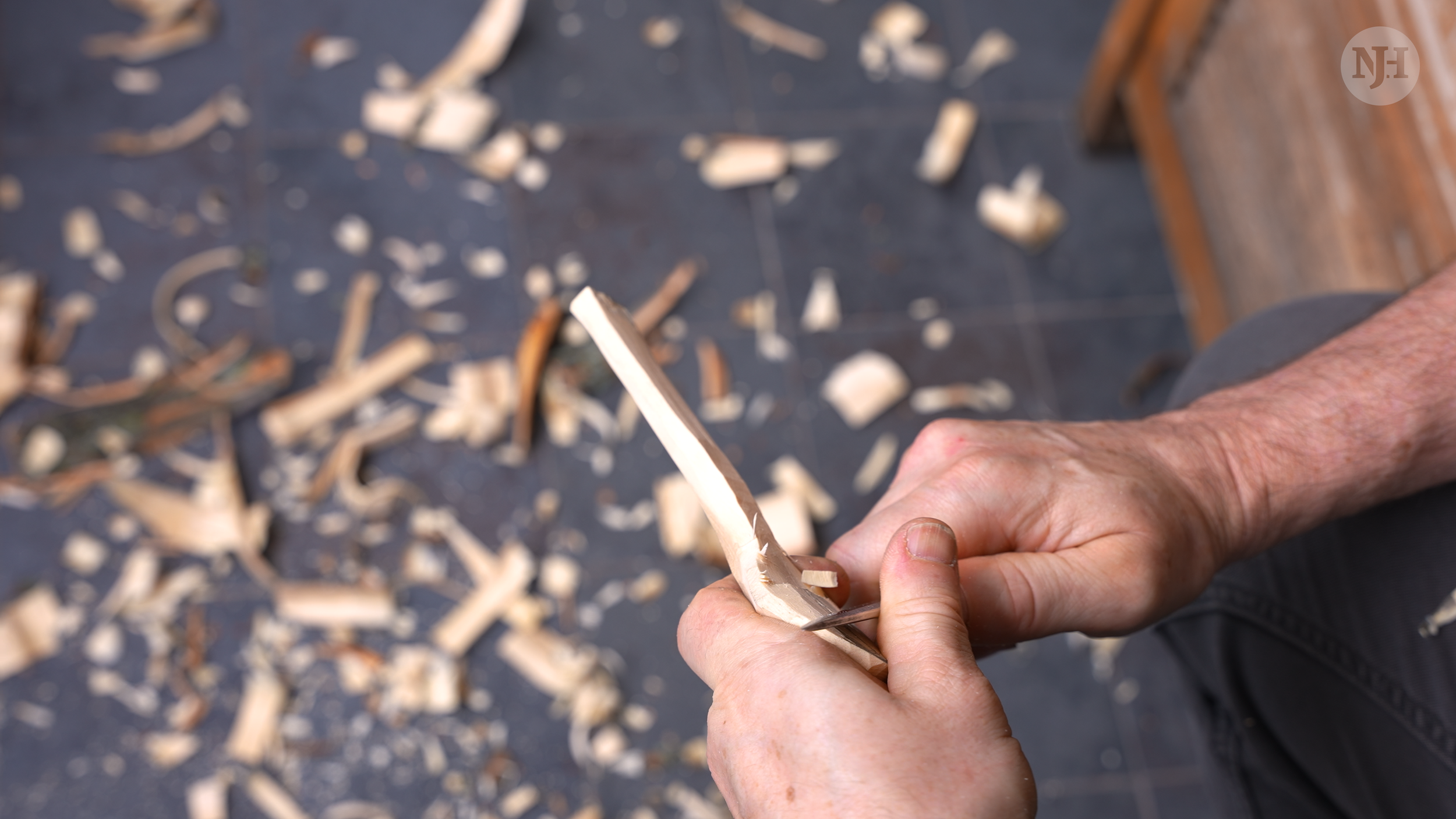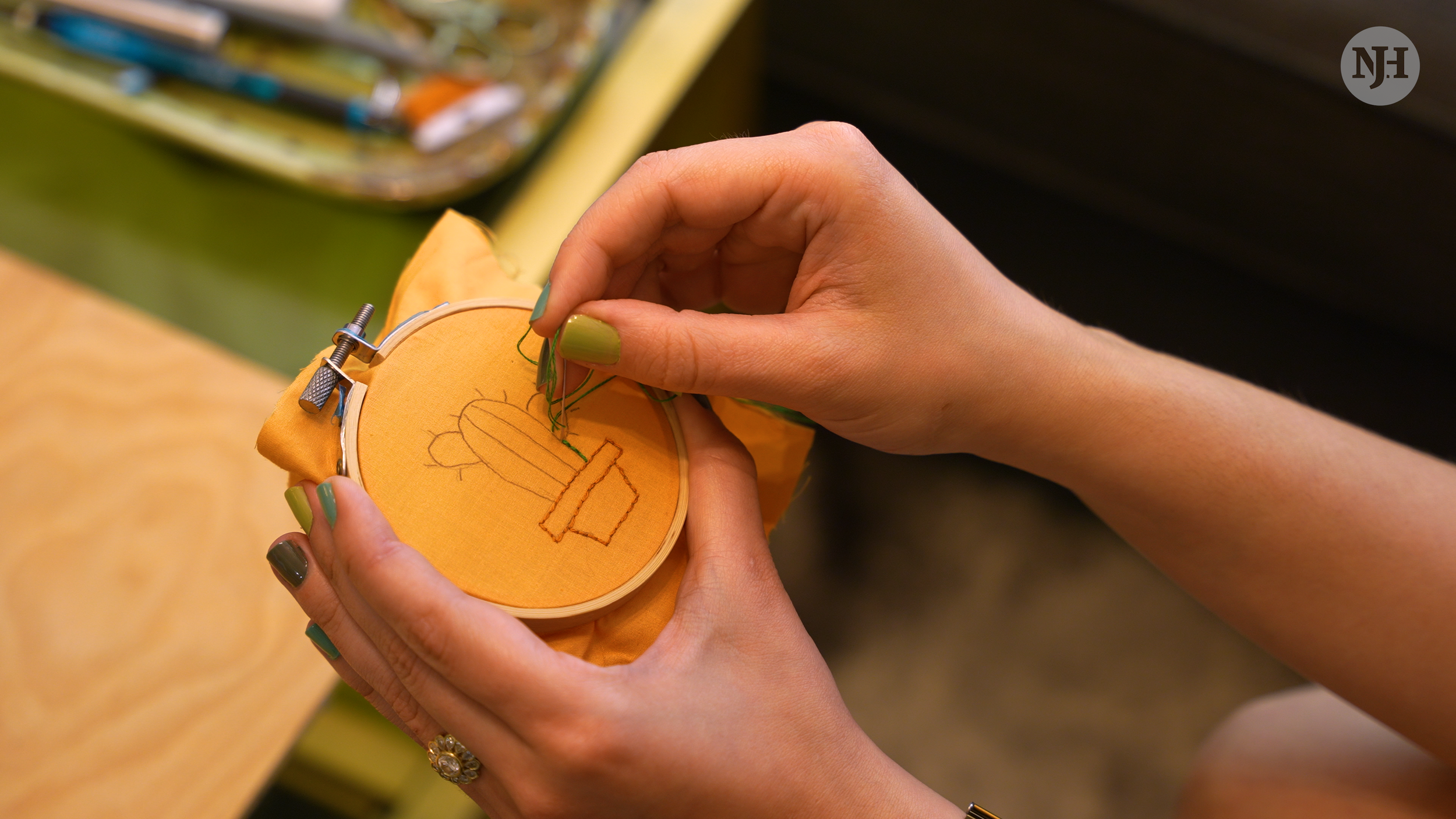Woodcarving
written by Dan Musick @musick.carving
How I got started
I grew up with art in the family. My father was a woodworker, my mother made beautiful porcelain dolls, and I grew up with a talent for cartooning, illustration, and storytelling. I had been interested in woodcarving for most of my life, but couldn’t find anywhere to learn, so it marinated in the back of my mind until about 15 years ago when I searched YouTube and found some beginning spooncaring videos that got me started. At that time, spoon carving and green woodworking were on the rise, and I found a local community of carvers in New York who would regularly meet at a friend’s farm for weekend woodcarving. This opened the door to amazing learning, people willing to teach and a wonderful community. From there, I took classes in spoon and bowl carving and found that more and more videos were being posted to YouTube. In fact, spoon carving was becoming an international fascination, and gatherings and festivals started to become organized.
To further my learning, I began to look at woodcarving magazines that published small projects I would try my hand at, and I continued to take classes I found at local woodshops or online. I began to branch out from spoon carving to develop character carving, which became a wonderful moment where my cartooning background and wood carving interests came together to create fun characters. This inspired me to take a course in wooden marionettes, and I have also been inspired by Mexican Alebrijie carving and Japanese Kumiko work. More recently, I took another leap and ventured into boatbuilding. While not exactly woodcarving, the confidence I had built and many of the skills I had acquired translated, and now I also build a variety of boats. It has been amazing that by starting to learn a simple spoon, my hobby has led me to more and more learning, meeting different people, and continues to inspire me to learn and grow.
Wood carving has opened me to a wonderful craft and amazing people. I love woodcarving because it is a great way to relax and do something meaningful with my time. Plus, I end up with some pretty cool things that others enjoy. You don’t need a lot of room or a woodshop. I carve outside in a park or from my kitchen table. At home, I use an old wooded wine box to house my current project, knives, and shavings so that when I’m done, I can close the lid and keep the work contained without making too much of a mess. It can also be relatively cheap, you just need a knife and you can find wood just about anywhere. I live near Central Park and am always on the lookout for trimmed tree limbs or downed wood from storms. My friends and family laugh at me because there is always a piece of wood in my backpack or the trunk of the car and a knife nearby ready to carve!
Wood
In learning to carve wood, it becomes important to understand the difference between various wood and how wood works. There are two basic categories: green woodworking (freshly cut wood from trees) where there is still moisture in the wood and woodcarving from dried wood that can be bought in stores or online. Spoons and bowls are generally carved in green wood whereas puppets and characters are generally carved in dried wood. It helps to learn the relative hardness in species of wood and which woods are better for carving. Birch, Cherry, and Maple are great hardwoods for carving spoons and bowls and basswood is excellent for carving characters or puppets. Basswood in particular is a great woodcarving wood because it is considered a hardwood but is still relatively soft for carving and it is easy to purchase from stores.
Knives
There are a variety of knives to use. A few great sources to get started as a beginner are:
Mora 106 knife- a great all-around knife
Beavercraft knives- they make a variety of good carving knives and sell beginning carving sets
Felxcut - also a wide range of carving knives
Where to start learning
Here are a few places to get started. These are suggestions I am familiar with, but there are many, many more:
Online:
Youtube has become a wonderful place to learn any type of wood carving
Facebook Groups such as:
Character Carvers
Spoon Carving, Green Woodworking, and Slyod
Spoons Spoonclub- is an excellent place to get started with spoon carving and green woodworking.
Carving figures A favorite is Lynn O. Doughty who has a wonderful YouTube channel
Puppets
In-person
Local spoon clubs - free spoon carving and great communities
Local woodworking courses such as:
NYC - Makeville, Bien Hecho
Philidelphia - Philadelphia Furniture Shop
Minnesota - North Hoiuse Folk School
Gatherings and Festivals
Green Woodwrights Festival (North Carolina)
Milan Spoon Gathering (Minnesota)
Spoonfest (UK)






From practical tools to artworks.
It’s all in the name. You’re carving wood.
However, what you carve and how you carve it is up to you.
You can craft utensils for your kitchen or outdoor adventures. Or even figurines and puppets to gift to others.
And you can do it all in the comfort of your front porch or seated indoors.
Knife safety
A knife is the primary tool used in woodcarving — which can be intimidating at first.
But think of it like the knife in your kitchen.
Take it slow. And there are many grips, gloves, and guides to help you be as safe as possible.
Investing in a good, sharp knife is just as important.
Spoons and chopsticks
The best way to start your woodcarving journey is with more simple items.
Spoons are a common way to start. It’s a relatively easy overall shape but many different types to make.
Chopsticks are another fun piece. Two single sticks. The challenge is keeping them identical.
Eventually as you learn and craft more pieces, you’ll be able to explore different techniques. And with these techniques, you can make anything you’d desire.
Discover more hobbies.
Discover more of Dan’s woodcarving on Instagram @musick.carving.









